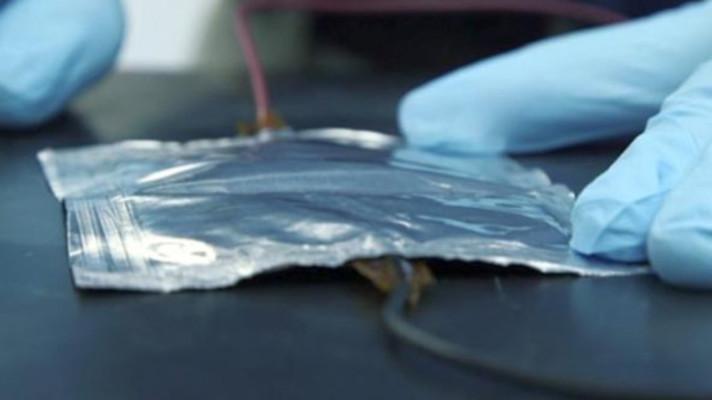Energy harvesting foil generates electricity from human motion
Researchers at Vanderbilt University's (Nashville, TN) Nanomaterials and Energy Devices Laboratory have developed an ultrathin system that harvests energy from motion at very low frequencies, one of the major challenges of such systems.
The system uses atomic layers, or 2D nanosheets, of black phosphorus that generate small amounts of energy when it is bent or pressed, even at the low frequencies of human movement.
"When you look at Usain Bolt, you see the fastest man on Earth. When I look at him, I see a machine working at 5 Hz," said Nitin Muralidharan, a doctoral student who co-led the project with Mengya Li
Most energy harvesting systems based around piezoelectric crystals operate at around 100Hz and have to be tuned to the resonant frequency to be most effective. The 2D nanosheets can pick up much of the energy generated at frequencies down to 0.01Hz, meaning most of the energy from the movement is collected.
"In the future, I expect that we will all become charging depots for our personal devices by pulling energy directly from our motions and the environment," said Cary Pint, Assistant Professor of Mechanical Engineering at the Lab who directed the research.
"Compared to the other approaches designed to harvest energy from human motion, our method has two fundamental advantages," he said. "The materials are atomically thin and small enough to be impregnated into textiles without affecting the fabric's look or feel and it can extract energy from movements that are slower than 10 Hz over the whole low-frequency window of movements corresponding to human motion."
"Our harvester is calculated to operate at over 25 percent efficiency in an ideal device configuration, and most importantly harvest energy through the whole duration of even slow human motions, such as sitting or standing," he added.
The system is based on the group's research on stretchable battery technology. Pint's team reconstructed the battery with both positive and negative electrodes made from the same material. Although this prevents the device from storing energy, it allows it to fully exploit the voltage changes caused by bending and twisting and so produce significant amounts of electrical current in response to movement, generating 40 microwatts per square foot over the full duration of movements as slow as 0.01 Hz.
One of the challenges is that the voltage generated is low, in the millivolt range, but the team is looking at low voltage LCD screens. "We are already measuring performance within the ballpark for the power requirement for a medium-sized low-power LCD display when scaling the performance to thickness and areas of the clothes we wear." said Pint.
There are other unexpected applications. "When incorporated into clothing, our device can translate human motion into an electrical signal with high sensitivity that could provide a historical record of our movements. Or clothes that track our motions in three dimensions could be integrated with virtual reality technology. There are many directions that this could go," said Pint.
For more, see "Ultralow Frequency Electrochemical-Mechanical Strain Energy Harvester Using 2D Black Phosphorus Nanosheets."
Vanderbilt University Nanomaterials and Energy Devices Laboratory
Related articles:
Formerly 'useless' material holds promise for flexible, smaller electronics
Flexible nanogenerator harvests energy from human motion
Flexible power generators promise self-powered wearables
New energy harvesting method harnesses power from walking, other small motions
July 28, 2017 // By Nick Flaherty
